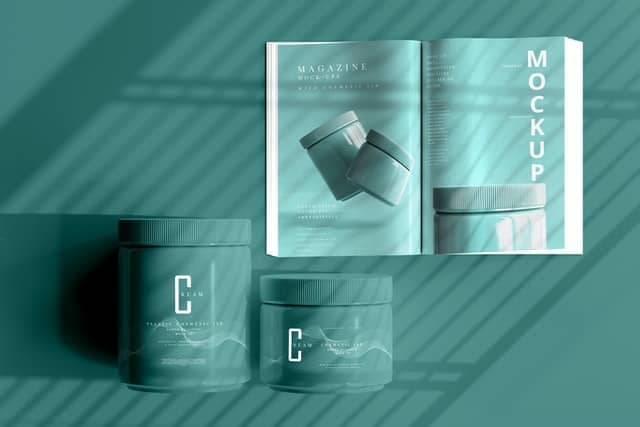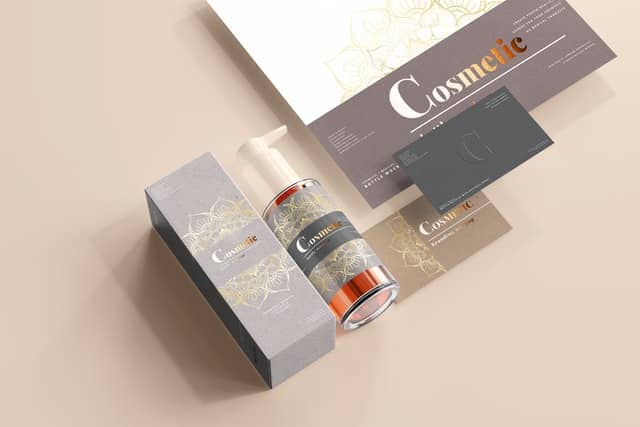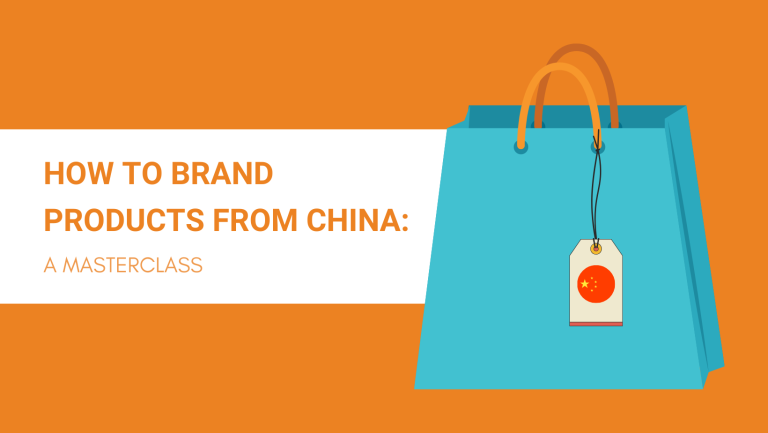Selling products under your own brand opens up a whole new world of possibilities. It sets you apart from your competitors and allows you to curate the kind of products you offer based on the preferences of the customers you are targeting.
As a result, most entrepreneurs turn to China to source products that they can brand and sell at a profit. Its factories have outstanding capabilities and offer an incredible variety of ready-to-brand products as well as customization services.
That said, if you are just venturing into branding products, it is understandable that you may be feeling out of your depth. So, in this blog, we discuss how to brand products from China and answer some of the questions you may encounter along the way.
Ready? Read on.

Create Your Brand
Branding is all about creating a synergy between the products you sell and the identity of your business. It is why, for instance, people naturally associate Rolex with high-end watches.
In light of this, it would be a good idea to begin by defining your brand. Address issues such as:

- Your logo– in most cases this may have to appear on the products or the packaging of the products you sell as the unique mark of your brand.
- Your range of products– what niche of products will you be venturing into and what variety of products would you like to sell?
- Your target market- consider what target market you would like your brand to appeal to. This could help you curate your packaging and product selection in a way that they can relate to.
At this stage, you can also weigh your options to decide how you would like to navigate branding the products you get from China.
White labeling may be a great way to start. All you have to do is order the products, request any minor modifications you require, and have them branded or packaged with your logo. It does not require any technical expertise on your part and takes a short time.
As your brand becomes more established you could take it a notch higher by venturing into private labeling. It would give you the freedom to design or formulate your products then have them manufactured and branded for your company.
Find Suppliers in China

Having established your brand goals, you can now begin finding suppliers in China that can provide the kind of products you want. The best part is, there are lots of ways to find good suppliers.
If you would like to avoid making a trip to China, you can find suppliers on credible online marketplaces like CJ Dropshipping or Alibaba.
Such platforms allow you to browse through each supplier’s product catalog and even communicate with them to discuss options like branding.
Alternatively, you could choose to work with a professional sourcing company. All you would have to do is provide them with an informative brief of the products you are looking for and they will find a manufacturer that can deliver.
Good sourcing companies also offer other essential services such as:
- Overseeing the implementation of your branding concept I.e ensuring that the manufacturers produce and package the goods to match your branding requirements.
- Handling communication between you and manufacturers.
- Negotiating fair prices and supply terms.
- Performing quality inspections on your behalf.
On the other hand, if you would like a more hands-on approach, you could always visit China and explore its wholesale markets and factories.
However, make an effort to do your research ahead of your visit so that you narrow down on what cities and manufacturing hubs to visit.
Where possible, try to make your visit coincide with trade shows that host suppliers of the kind of products you would like to brand. This would give you ample time to visit their exhibition booths, examine their products, and possibly find a few potential suppliers to work with.
Choose the Right Supplier for Your Needs

The decision on whether to work with a manufacturer or not, is often determined by multiple factors. They include:
- Prices– product sourcing prices impact your profits and, therefore, it is wise to choose a supplier that offers affordable wholesale prices.
- Product quality– aim for the highest quality of products you can get within your budget. Low quality products would reflect poorly on your brand and likely turn customers away.
- MOQ– manufacturers in China usually have set minimum order quantities that you need to meet especially for products that require any kind of customization. Aim for those with MOQs that match your supply needs.
- Shipping capabilities- your preferred manufacturer needs to be able to deliver to your destination. You could, however, bypass this hurdle if you will be working with a sourcing company because they can handle shipping for you.
More importantly, the manufacturer you choose needs to have adequate customization capabilities and offer branding support. Without an innovative branding or R&D team, they may not be able to offer you adequate service to fulfill your branding goals.
Request Samples

The factors we have discussed above would make it easy to zero in on one or two Chinese suppliers that would be viable partners. You can then reach out to them with a detailed brief of the exact type and design of products that you need and request samples.
The samples will give you a more accurate representation of the kind of products that the suppliers would deliver once you place an order. You would be able to evaluate:
- The quality of the products they offer
- How well they execute your branding ideas
- Their turnaround times
- How well they coordinate shipping and consultations as they process your orders
Your manufacturing partner will likely use the sample that you approve as a point of reference henceforth. Therefore, be as specific as you can during this process and do not hesitate to request alterations if you are discontent with the samples that you receive.
Compare samples between your top suppliers too instead of limiting your choices to just one. Finally, choose the supplier you reckon captured your ideas with greater precision.
Understand the Manufacturing Processes

White label products take a comparatively shorter time to process than private label products. This is because they are usually a design or formulation that the manufacturer already produces regularly.
During production, the manufacturer may only need to make a few changes to accommodate your customization requests or to execute your customized packaging ideas.
In contrast, private label products take longer to manufacture because they are entirely new designs.
For example, if you would like to start selling private label stainless steel jewelry, the manufacturer may have to create a mold using your design before they can begin production.
Brand It

Customizing products for your brand or coming up with OEM designs is only one aspect of branding. Once the manufacturing is complete, your manufacturing partner can incorporate other aspects of branding such as:
- Affixing branded labels to your products
- Engraving, laser-printing, or electroplating the products with your logo
- Packaging your products in gift bags or boxes with your brand name or logo
- Adding branded slips, ‘thank you’ notes, or promo flyers as they package your products
Contrary to popular belief, these are not just aesthetic touches that attract customers to your products. They also make your brand more relatable and provide a more enjoyable customer experience.
In terms of sales, experts opine that consumers are more likely to buy products wrapped in gift packaging. They would, additionally, be more willing to pay a slightly higher price for such a product as opposed to one wrapped in ordinary unimpressive packaging.
Unfortunately, not all manufacturers may be keen enough to offer these types of branding. In some cases, those that do, charge a premium for it.
Herein lies another perk of working with a sourcing company. Instead of shipping the goods and packaging them once they arrive, you can request your sourcing company to collect the order on your behalf and handle the branded packaging processes.
This solution would be particularly crucial if you are branding products for dropshipping fulfillment. However, it can just as easily be applied in instances when you simply want to receive products that are ready to sell.
Tips on Branding Products from China
As you begin branding products from China, here are some tips that could help you excel at it.
Budget Right

Branding products cost more than sourcing products and simply reselling them as they are. The extra costs arise due to the extra procedures that your manufacturer would have to carry out to brand your products.
In addition to product costs, it is prudent to plan for other expenses such as shipping fees, taxes, sourcing agent fees, and similar contingencies.
Have an Effective Marketing Strategy
It is crucial to have a marketing strategy that compliments your branding efforts. More so because customers in some markets tend to have a bias against products made in China.
Aim for a marketing strategy that:
- Makes customers curious about your brand by highlighting what you offer that your competitors do not
- Highlights why your customers need your product
- Is memorable and makes customers want to relate with your brand more
- Targets and reaches your target market in a way that they understand and can relate too
If you reckon the ‘made in China’ tag would work against you, consider asking your manufacturer to use the less obvious ‘made in PRC‘ tag.
Anticipate International Trade Challenges

International trade comes with its fair share of challenges. They include:
- Forex rate fluctuations
- Delayed production schedules
- Raw materials shortages
- Shipping delays
Each of these factors can impact both your supply chain and your profits. Subsequently, it may be in your best interest to have contingency plans for each of them.
For instance, you could try and order in higher quantities before the Chinese New Year holiday and other festive seasons. If your products are not perishable, you could also buy more units when forex rates are firmly in your favor and save on costs.
FAQs on How to Brand Products from China
How Do I Choose Between White Label Products and Private Label Products?
None of these approaches is exclusively right or wrong. However, you can make the choice based on the vision you have for your business and the branding goals you would like to achieve.
Consider white label products if you:
- Have a limited budget
- Are not yet well-experienced or feel uncertain about developing your own product from scratch
- Would like to get your products in the market within a short time
- Would prefer to test the market or build your brand before venturing into private label products
On the flip side, private label products may be ideal for your business if:
- You are an expert in the field and feel confident about your product development skills/ideas.
- Would like to create a very specific product to fill a specific market gap.
- Have enough time and resources to go through the rigours of product development, testing, and production.
Is It Legal to Brand Products from China?
It is fully legal to brand white label products or private label products that have been manufactured for your brand.
Branding products from China would only be illegal if you passed off products made for another brand as your own.
Why China?
There are millions of manufacturers around the world and even in your local vicinity that can produce goods for branding. So, why China?
Here are some of the reasons why manufacturing in China is considerably more advantageous.
- Factories in China benefit from government subsidies and policy support. Subsequently, they are able to offer fairer prices than most of their competitors around the world.
- China has made great efforts to develop sustainable raw material sources. Manufacturers also use alternative raw materials like engineered wood which is available all year. This reduces supply chain delays caused by raw material shortages.
- When it comes to customizing products and re-imagining products, Chinese suppliers outpace others by miles. They are highly innovative and have production tools that are advanced enough to execute even complex designs ideas.
- Factories in China have impressive output rates that make it possible to scale your business without worrying about whether your supplier will be able to keep up with your supply demands.
In Conclusion
In the beginning, sourcing and branding products can seem tedious and costly. However, you will certainly enjoy the rewards as customers begin to appreciate your brand and buy more of your products.
Is your business already too demanding to allow for branding? Or, are you uncertain about juggling sourcing processes and branding all at once? Then let us help you bring your branding goals and ideas to fulfillment.
We are a sourcing company that is well-versed in product branding and product development. We professionally handle every step of the branding process from the proposal stage to finding manufacturers and even customized packaging.
All you have to do is send us a brief with details of your sourcing requirements and request a free quote.

